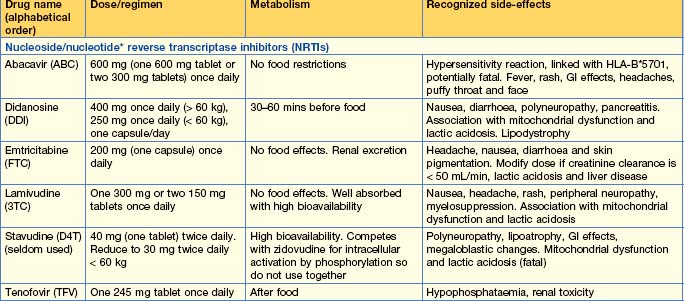3 Human immune deficiency virus and AIDS
Introduction
Pathogenesis
Disease manifestations of hiv infection
These can be due to HIV itself, to the treatment of HIV and lastly to immunosuppression, which leads to opportunistic infections (p. 111) and cancer (p. 117).
HIV infection
HIV-associated nephropathy (HIVAN)
HIV-associated dementia
Manifestations due to treatment of HIV
Mitochondrial toxicity and lactic acidosis
Approach to the Patient
Initial diagnosis
In patients with undetermined/negative HIV serology, the diagnosis of an acute infection is by demonstrating a high viral load or a positive p. 24 antigen (which disappears after 8 weeks of infection).
Investigations and monitoring
Initial assessment
All clinicians should be of the competence necessary to obtain consent for an HIV test. The British HIV Association provides a list of associated presenting conditions for which an HIV test may be indicated (http://www.bhiva.org/cms1222621.asp). Many patients are diagnosed when they present themselves to a sexual health clinic.
Box 3.1
(Based on British HIV Association guidelines 2008)
Baseline investigations in a newly diagnosed asymptomatic patient with HIV infection
A full examination, including fundoscopy, neurological examination and palpation of all lymph node groups, is carried out.
CD4 count
The viral load
Genotyping
highly active anti-retroviral therapy (haart)
Available anti-retroviral medications, along with their side-effects, are shown in Table 3.1.
Available drugs
Nucleoside reverse transcriptase inhibitors (NRTIs)
Nucleotide reverse transcriptase inhibitors
Stay updated, free articles. Join our Telegram channel

Full access? Get Clinical Tree



